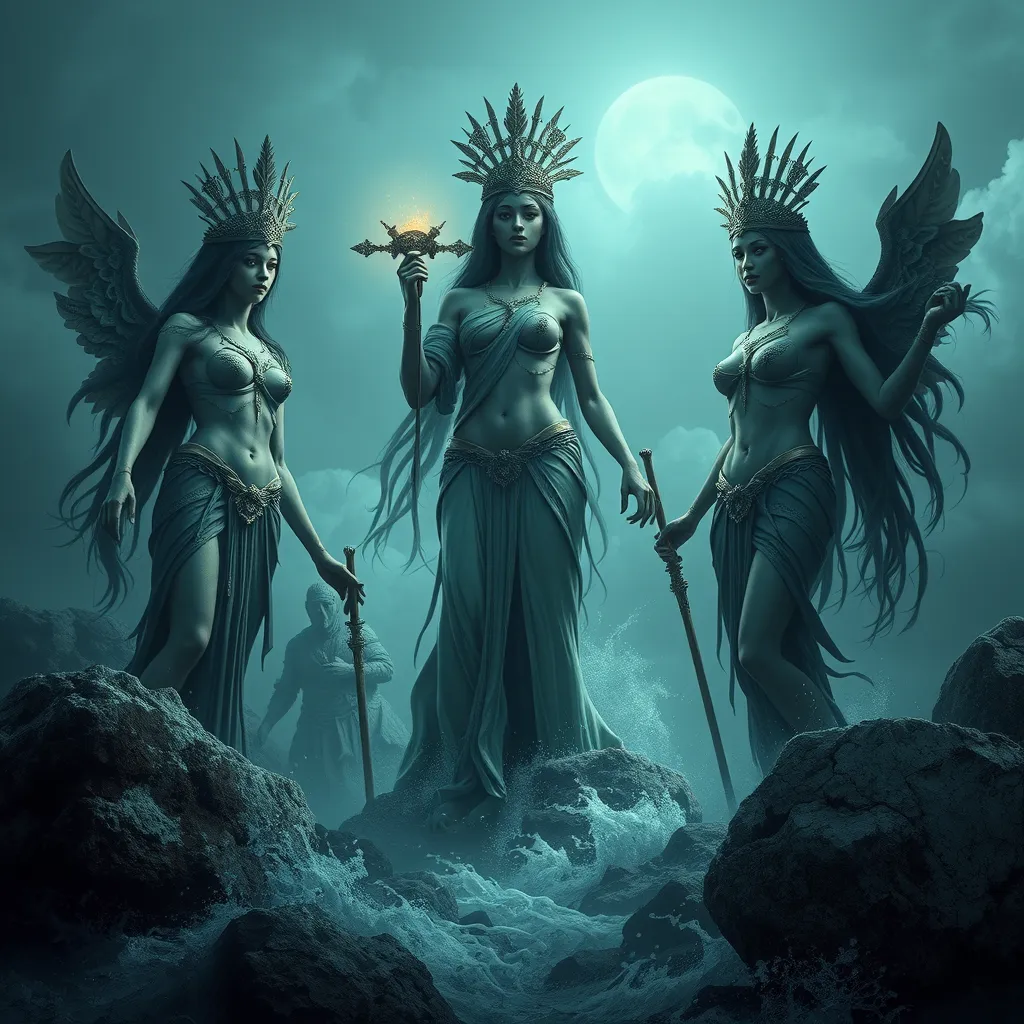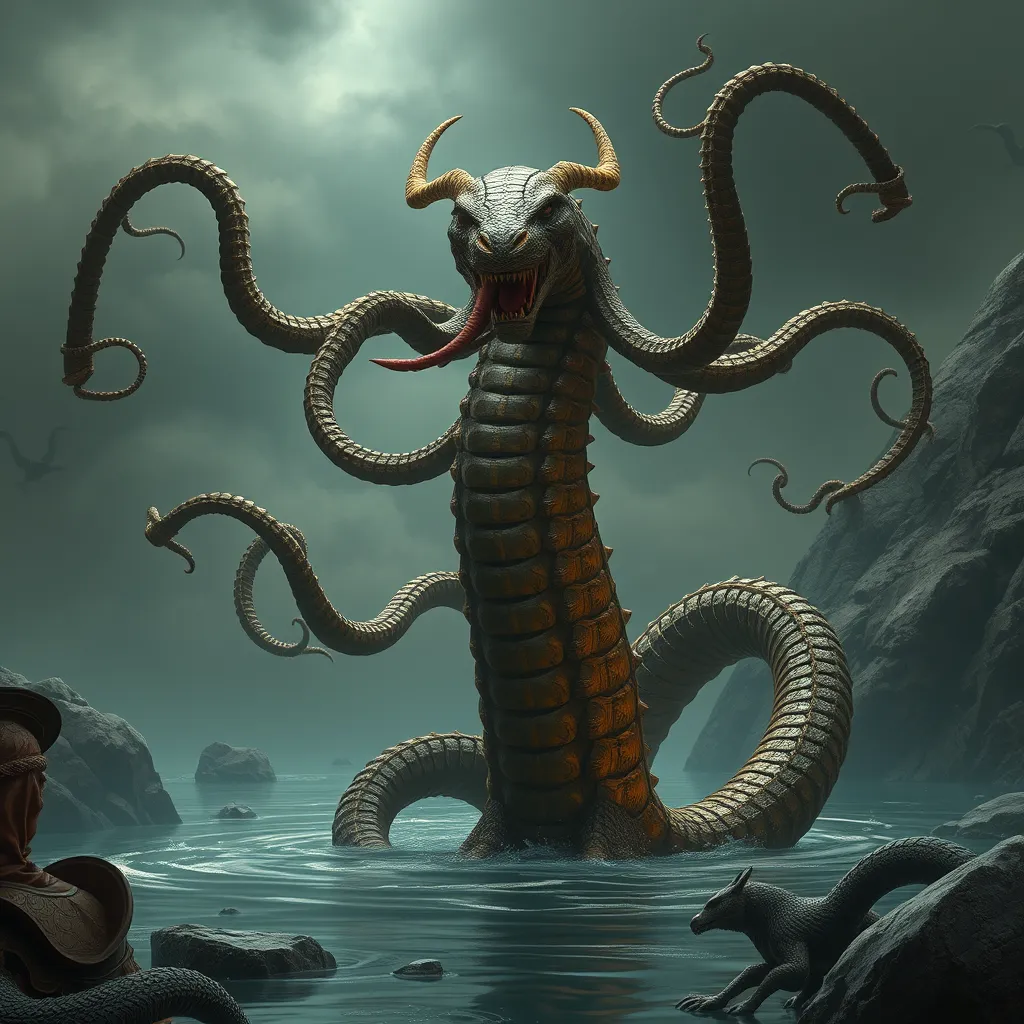The Pantheon of Olympus: Greek Gods and Goddesses of the Sky
I. Introduction to the Pantheon of Olympus
Greek mythology is a rich tapestry of stories and characters that have captivated human imagination for centuries. At the center of these tales is the Pantheon of Olympus, a collection of deities who governed various aspects of life and nature. Among these, the sky gods and goddesses hold a significant place, as they embody the forces of nature that were essential to the ancient Greek understanding of the world.
The sky was viewed as a realm of power and divinity, with gods who controlled the weather, celestial bodies, and the very fabric of life. This article aims to explore the major deities associated with the sky, their attributes, myths, and the cultural significance they held in ancient Greek society.
II. The Major Gods of Olympus
A. Zeus: King of the Gods
Zeus, the ruler of Mount Olympus and king of the gods, is perhaps the most well-known figure in Greek mythology. He is often depicted as a powerful figure wielding a thunderbolt, symbolizing his authority over the sky and weather.
- Attributes and symbols: Thunderbolt, eagle, oak tree.
- Role in mythology: Zeus played a crucial role in numerous myths, including the overthrowing of his father Cronus, and his numerous escapades with both mortals and immortals, further emphasizing his position as a figure of power.
B. Hera: Queen of the Gods
Hera, the wife of Zeus and queen of the gods, is known for her role as the goddess of marriage and family. She is often portrayed as a majestic figure, adorned with a crown and scepter.
- Attributes and symbols: Peacock, diadem, pomegranate.
- Role in mythology: Hera is a central figure in many myths, often depicted as a jealous wife who seeks revenge on Zeus’ numerous lovers and their offspring, highlighting her complex character and the dynamics of divine relationships.
III. The Olympian Deities Associated with Weather
A. Poseidon: God of the Sea and Earthquakes
While primarily known as the god of the sea, Poseidon also held sway over storms and earthquakes, making him a pivotal figure in weather-related myths.
- Duality of his power: Poseidon’s ability to create storms at sea showcases his dual nature, as he could bring both destruction and calm.
- Influence on weather phenomena: Sailors often prayed to Poseidon for safe voyages, reflecting the importance of his blessings in their daily lives.
B. Demeter: Goddess of Harvest and Agriculture
Demeter, the goddess of the harvest, played an essential role in agricultural practices and the cycle of seasons, making her indirectly connected to weather patterns.
- Connection to climate and seasons: Her grief over the abduction of her daughter Persephone by Hades resulted in the changing seasons, symbolizing the connection between fertility and the weather.
- Myths surrounding her influence on the sky: Demeter’s control over the fertility of the earth intertwined with her emotional state, influencing agricultural productivity.
IV. The Personification of Natural Elements
A. Aeolus: Keeper of the Winds
Aeolus, often regarded as the god of winds, played a critical role in controlling the various winds that could aid or hinder sailors.
- His role in mythology: Aeolus was known to have kept the winds locked away in a cave, releasing them at the request of gods and mortals alike.
- Cultural significance of wind: The Greeks saw wind as a powerful force, and Aeolus’ control over it was crucial for navigation and agriculture.
B. Helios: The Sun God
Helios, the personification of the sun, was depicted as a radiant figure driving a chariot across the sky, illuminating the earth.
- Depictions and myths: He was often portrayed in art as a young man with a shining crown, representing the life-giving force of the sun.
- Influence on daily life and worship: Helios was revered for his role in providing light and warmth, essential for life, and his daily journey across the sky was seen as a vital aspect of the natural order.
V. The Moon and Night Deities
A. Selene: Goddess of the Moon
Selene, the moon goddess, is often depicted as a beautiful woman riding a chariot drawn by two horses across the night sky.
- Myths and representations: She is known for her love affair with the mortal Endymion, symbolizing the connection between the divine and human realms.
- Importance in Greek culture: Selene was worshipped for her gentle light that guided travelers and influenced the tides, reflecting the interconnectedness of the moon with life on earth.
B. Nyx: Goddess of Night
Nyx, the personification of night, is a powerful figure in mythology who represents the mysteries and unknown aspects of the dark.
- Role and significance: Often depicted as a shadowy figure, Nyx was believed to have the ability to control sleep and dreams.
- Influence on other deities and myths: Many deities, including Hypnos (Sleep) and Thanatos (Death), were said to be her children, emphasizing her importance in the cycle of life and death.
VI. Lesser-Known Sky Deities
A. Eos: Goddess of Dawn
Eos, the goddess of dawn, is depicted as a beautiful woman who opens the gates of heaven for the sun to rise.
- Myths and symbolism: Eos is often portrayed as bringing light to the world after the darkness of night, symbolizing hope and new beginnings.
- Role in the cycle of day and night: Her daily ritual of rising and spreading light was essential to the Greeks, marking the start of a new day.
B. Thanatos and Hypnos: Personifications of Death and Sleep
Thanatos (Death) and Hypnos (Sleep) are twin brothers who embody the concepts of death and rest, respectively.
- Their connection to the sky: Often depicted as winged figures, they represent the transition between life and the afterlife.
- Myths involving their roles: Their stories illustrate the Greeks’ understanding of mortality and the importance of rest, both physically and spiritually.
VII. Worship and Temples Dedicated to Sky Gods
A. Major sanctuaries and temples
The worship of sky gods was central to ancient Greek religion, with numerous temples and sanctuaries dedicated to them throughout the Greek world.
- Importance of location and architecture: Many temples were built on elevated ground, symbolizing the connection to the heavens, and were often adorned with intricate sculptures and carvings.
- Rituals and festivals: Festivals such as the Olympic Games honored Zeus, while various rituals were performed to appease other sky deities, highlighting their significance in daily life.
B. Influence of sky gods on ancient Greek society
The sky gods played a vital role in shaping ancient Greek culture and society. Their stories were woven into the fabric of daily life, influencing everything from agricultural practices to artistic expression. The reverence for these deities can be seen in literature, sculpture, and the very structure of Greek society, where divine favor was sought in every aspect of life.
VIII. Conclusion: The Legacy of the Sky Gods
The legacy of the Greek sky gods extends far beyond the realms of mythology. Their narratives have inspired countless works of art, literature, and philosophy throughout history. The archetypes of these deities continue to resonate in contemporary culture, reminding us



